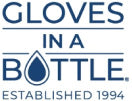
Hand Washing for Nurses: How to Do It Effectively
Share
Most of us naturally wash our hands at certain times of the day out of habit, like before we eat, after going to the bathroom and before preparing food. But what about having a job that requires impeccable hand hygiene in order to keep those around you safe from illness? Being a nurse is one of those jobs where hand washing is part and parcel of your job – so much so that nurses may be washing their hands up to 100 times during a 12-hour shift, according to the CDC (Centers for Disease Control and Prevention).1 Sounds crazy, doesn’t it? But there is such a thing as washing your hands correctly if you’re a nurse. Knowing what hand washing for nurses looks like is a big eye opener to the rest of us when thinking about just how effective – or ineffective – our hand washing at home might be.
Why Do Nurses Need to Wash Their Hands So Carefully?
Nurses work in environments where germs can spread very easily if they’re not careful such as in hospitals, doctors offices and nursing homes. When working around patients whose state of health might be considered vulnerable to bacteria and viruses or have compromised immune systems, the last thing a nurse wants is to be the person who’s responsible for spreading an infection. Imagine the guilt!
When patients are in a hospital, for example, they are at risk from getting an infection that is not related to what they are in hospital for simply because of negligent hygiene practices.1 Likewise, nurses are at risk of getting infections when they are treating their patients too. Just think about flu season and how easily it can be passed on. This is why hand washing for nurses is so important, especially doing it effectively to make sure that germs are not being spread. Are you questioning your own hand washing yet? (wink wink!)
[product]
How to Wash Your Hands Effectively
- Use lukewarm water to wet your hands and apply soap. Cool water can be used too as long as you are scrubbing your hands properly but avoid hot water because it will dry out your skin very easily.
- Lather the soap all over your hands and up to your wrists, making sure to wash the palms, get in between the fingers, the backs of your hands and underneath your nails too! You should be rubbing and scrubbing for at least 20 seconds – about the length of singing Happy Birthday (Top tip: you don’t need to sing it out loud!)
- Rinse your hands by starting from your wrist and letting the water run downwards towards your fingers, until all the soap and lather is washed off. You don’t want any germs to be flowing up your arms and you also don’t want any soap left on your hands as this will dry out your skin.
- Using a clean paper towel, dab your hands dry (don’t rub as this can irritate and damage your skin) and make sure to dry in between your fingers and all the way up to your wrists.
- To turn off the water, you have a few choices depending on what kind of faucet you are using. (Oh the excitement!) You can either use your elbow to turn the water off or you can get another dry paper towel to use to turn off the faucet. You don’t want your clean hands to come in contact with the faucet otherwise you might be picking up germs already and you’d have to start your hand washing all over again!
- Use an approved hand lotion like Gloves In A Bottle to keep your skin moisturized. You don’t want to get contact dermatitis from all your hand washing as that can increase the chances of infection for you. By keeping your skin healthy and hydrated, you’re also keeping your natural defense system in check. Gloves In A Bottle is approved for use in hospitals and lasts through hand washing so you don’t need to apply it each time.
By making sure you wash your hands effectively, you can rest assured knowing you are doing your part in helping stop the spread of pathogens. Hand washing for nurses is something we can all learn from and apply to our lives. But don’t forget to keep your skin healthy too with an effective shielding lotion. Clean and healthy. That’s the aim of the game!
1 https://www.cdc.gov/patientsafety/features/clean-hands-count.html
